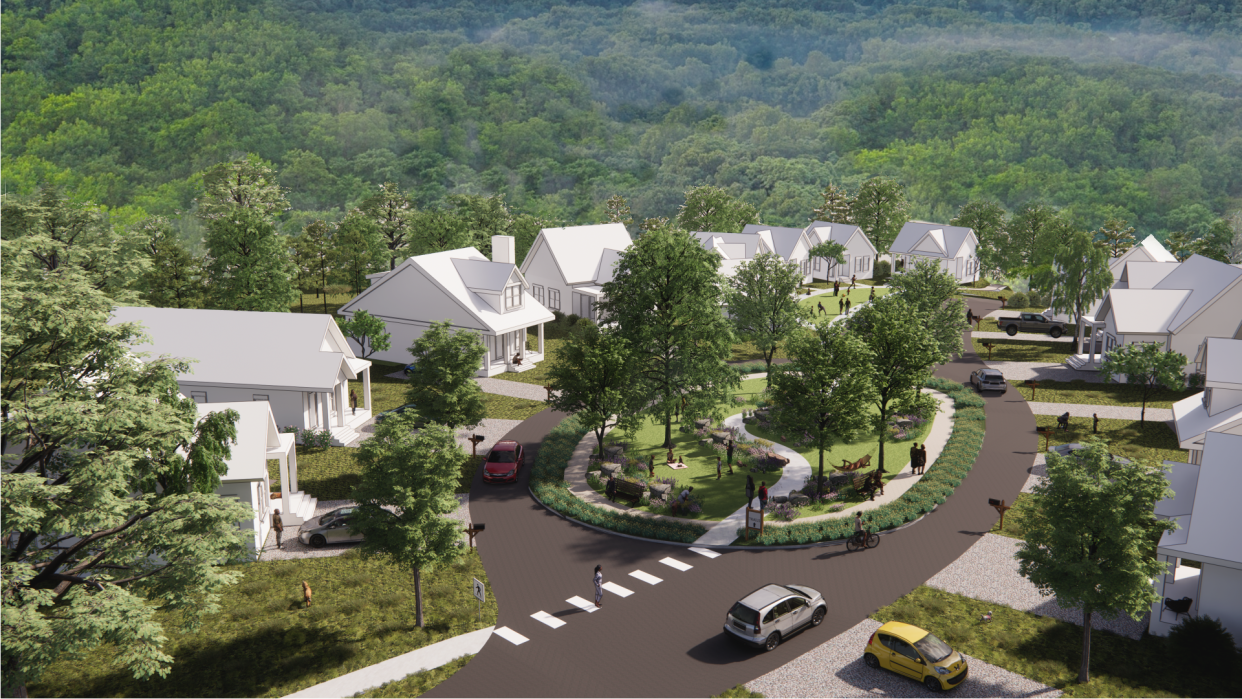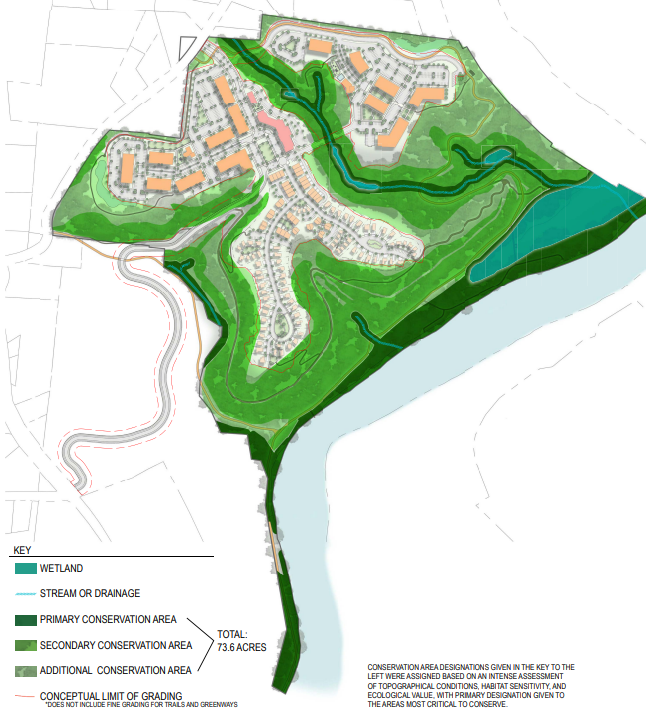Asheville affordable housing project with 645 units moves forward; City Council to vote

ASHEVILLE - As Asheville's metro faces some of the highest fair market rent in the Southeast, the area also faces a several thousand-unit housing shortage — a problem Buncombe County is trying to solve, whether it be through short-term rental regulations or encouraging housing developments, county officials are looking to solve it.
One of their solutions is Ferry Road, a sprawling 137-acre project that would bring over half of its projected 645 units to market at affordable rates.
The project was unanimously approved during the March 6 Planning and Zoning Commission meeting, where commissioners heard the projects goals to bring both affordable housing, conservation and, potentially, a childcare facility or clinic to the development site. After Planning and Zoning, its next stop will be a March 26 City Council meeting.
Sarah Odio, an associate director with the Development Finance Initiative at the UNC Chapel Hill School of Government, presented on the project during the meeting, noting the county is currently estimated to commit $34 million to see the project to the end.
Buncombe County Director of Economic Development Tim Love said the monetary commitment reflects how housing affordability often has to be subsidized, noting "it's not rocket science."
"Part of it is you subsidize what the market won't deliver," Love said of affordable housing. "And when we talk about commission and what they're doing, we can talk about conditions and rezoning and how we can try to encourage it by that."

"But the real test is when a local government body agrees to put dollars down on the table to subsidize those rents to drive a need in our community."
The project is estimated to cost a total of $210 million, for which Love told the Citizen Times that he "wouldn't be surprised" if the development saw the collaboration between multiple developers by the end of the project.
The project site is located near Bent Creek and is adjacent to the French Broad River. The parcel is within the city of Asheville, meaning city committees and City Council will hear on the project.
How many units?
Ferry Road is set to include a wide range of affordable apartment and homeownership opportunities, where a total unit count has been projected to be around 645-units, though the range for the unit counts does go higher. If built to the proposed maximum, 935 units could come the property.
The lower estimate is more realistic, those who've worked on the project say.
"We took a very low parking ratio and took a look at unit sizes and crunched it all out and we came out on the lower end of that range," said Bob Begle, an architect and designer with Lord Aeck Sargent.
Begle noted the upper range of units is included if "somebody can find a way to do it a little denser," which could provide more affordability on the site.
Here is the current proposed range of unit counts for the development:
Multifamily North: 190-350 units.
Mixed-use Core: 0-85 units.
Multifamily West: 260-360 units.
Mixed Residential: 100-140 units.
Transit as part of the 'affordability picture'
Vicki Meath, CEO of Just Economics of Western North Carolina, made a public comment on Ferry Road during the meeting, where she said the organization supports the Ferry Road proposal but brought up some suggestions when it came to including "transit as a part of the larger affordability picture."
Just Economics is part of the Asheville Regional Transit Coalition, alongside Hi-Wire Brewing, Children First, MountainTrue and the Sierra Club of Western North Carolina.
Currently, the county uses Mountain Mobility — a county-based public transit system — but also coordinates with the Asheville Rides Transit fleet to bring stops to different areas around the development.

Meath called for collaboration between the county and city to bring more transportation options to the development.
"Collaboration does not just mean asking the city to extend their route," Meath said of adding an ART stop nearby the development. "It means partnering on both planning and funding, because the city system is a complex scenario."
From the early January city proposal to the Planning and Zoning Commission, one distinct change was made to the project's road layout, where a connecting road was proposed from the multi-family apartments in a northern district to the "mixed-use core" connected to the rest of the development.
During the meeting, Love said the change adds to the current transportation commitments made by the county. Other improvements include a new access road off of Brevard Road and improvements to Ferry Road and Dry Ferry Road.
Buncombe County Planning Director Nathan Pennington said the county would have "no problem" if conditions to explore transit options were included in the proposal. He also expressed a desire for the routes to be efficient if the ART system expands to include the development.
"What you want to avoid in mass transit are just 'one offs,'" Pennington said. "You want to pick up as many stops as possible, and as many people along the way."
Commissioners voted to include a condition that the county would explore further transit options for the development.
More than just affordable housing: Conservation
Out of the proposals in the project, Love told the Citizen Times that the conservation element of the project is "one of the strongest points."
While the project does emphasize affordable housing, a majority of the site is being placed under conservation easements, where residents will be able to travel through the community using greenways and trails.

The area has a "broad diversity of wildlife that will be protected through conservation," according to development documents. Salamanders and "evidence of river otters" have been spotted in the area.
The project's roadways and proposed parking has seen changes as the result of the conservation model, where the county has intentionally proposed a technical modification to city plans, which will get rid of minimum parking requirements for the project.
In the homeownership district, other measures have been taken to include low density roads that allow their "footprint to be a little more skinny," protecting conservation easements, Love told the Citizen Times.
Want to hear more about affordable housing projects? Give your input.
Ferry Road is not the only county-backed affordable housing project.
County-owned properties at 50 and 52 Coxe Avenue in downtown Asheville have also seen affordable housing pitches in the past year, with a recent presentation outlining two plans the county may move forward with. The plans reflect what will be shared with potential development partners on the project.
The county is currently looking for feedback on the plans. You can learn more about the project at https://engage.buncombecounty.org/coxeaveaffordablehousingsurvey.
More: Answer Man: Asheville faces highest rent in NC; How much funding for affordable housing?
More: Downtown Asheville 6-story hotel OK'd; Nearby investment group preserves historic churches
Will Hofmann is the Growth and Development Reporter for the Asheville Citizen Times, part of the USA Today Network. Got a tip? Email him at WHofmann@citizentimes.com.
This article originally appeared on Asheville Citizen Times: Asheville 645-unit affordable housing project to see City Council vote

